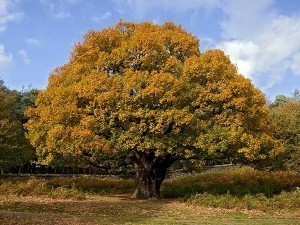Oak Tree Diameter
With more than 400 different species available, the  oak tree belongs to the genus Quercus. Although native to the northern hemisphere, it can also be found in the Americas and tropical Asia. Its leaves are arranged spirally. It produces beautiful flowers called catkins, specifically during spring. It bears a fruit, which is commonly referred to as an acorn. In addition to these basic details, it is also nice to know something about oak tree diameter.
oak tree belongs to the genus Quercus. Although native to the northern hemisphere, it can also be found in the Americas and tropical Asia. Its leaves are arranged spirally. It produces beautiful flowers called catkins, specifically during spring. It bears a fruit, which is commonly referred to as an acorn. In addition to these basic details, it is also nice to know something about oak tree diameter.
The Diameter of an Oak Tree
A fully-grown oak tree can have a trunk with a diameter of up to 9.5 feet or 2.8 meters. Meanwhile, the circumference of its trunk can be as huge as 32 feet or approximately more than 9 meters. In terms of height, this kind of tree grows at an average of 100 feet or close to 30 meters. The diameter of its canopy can spread from 85 feet to 135 feet or from 25 meters to 40 meters.
Additional Facts and Other Interesting Details
The wood of an oak tree is known for its various pleasant features including its hardness and great strength. Furthermore, it is highly resistant against fungal attack as well as insects, thanks to the presence of tannin. When quarter-sawn, it features grain markings that are highly attractive.
The oak tree also has a very rich cultural significance. It symbolizes endurance and strength. For this reason, it has been selected as the national tree of various countries like Germany, England and Estonia. The same also goes for other progressive nations such as Wales, the United States as well as France. In the United States, the white oak has been chosen as the state tree of places like Maryland, Illinois and Connecticut. Georgia, New Jersey and Prince Edward Island are other states that consider the oak tree significant.
It is very important to take care of an oak tree because it can succumb to various kinds of pests and diseases. For instance, the water mould called Phytophthora ramorum has the capacity to kill this kind of tree within weeks. Additionally, the fungus Ceratocystis fagacearum can lead to a lethal disease referred to as oak wilt. Some insects can also harm this kind of tree such as the gypsy moth, gall wasp and wood-boring beetles.
The acorns as well as the leaves of oak trees are harmful to horses, especially when ingested in large amounts. The tannic acid is a toxin that can cause gastroenteritis and kidney damage. Horses that succumb to this kind of poisoning experience different kinds of symptoms including constipation, depression and lack of appetite. It is also possible for them to have colic, blood in urine as well as diarrhea.





